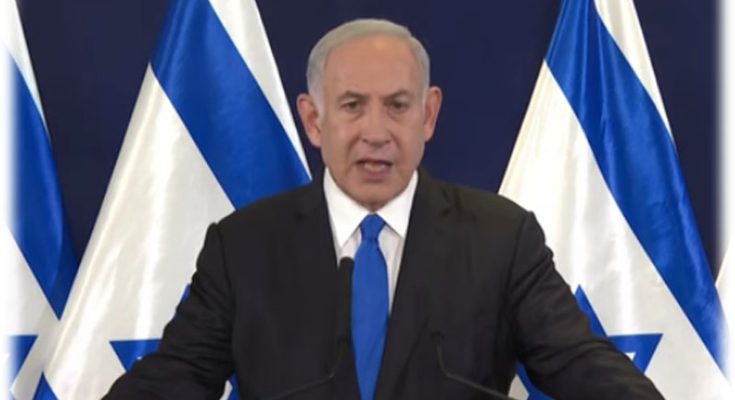#BenjaminNetanyahu, #GazaWar, #IsraelHamasWar, #PalestineWar, #Israel
Jerusalem/IBNS-CMEDIA: Israeli Prime Minister Benjamin Netanyahu has unveiled his post-war strategy for Gaza, the first since the Israel-Hamas conflict broke out in October last year, involving a continuous military presence in the Palestinian enclave, and the replacement of Hamas, his office said in a statement on Friday.
The document, presented by Netanyahu to members of his security cabinet on Thursday, outlines principles regarding the management of the Gaza Strip after the conflict.
The plan aims to install “local officials” unaffiliated with attacks against Israelis to administer services in the Palestinian enclave instead of Hamas.
“As far as possible, the civil administration and responsibility for the public order in the Gaza Strip will be based on locals with administrative experience,” the document read.
The reconstruction of Gaza, following Israeli bombardments that devastated much of its infrastructure and buildings, would begin only after the demilitarization and “deradicalization” of Gaza, as outlined in the plan.
The reconstruction would be financed and carried out by countries deemed “acceptable by Israel.”
The plan calls for tightening Israel’s security grip on Gaza. Under the proposed plan, Israel will “maintain operational freedom of military actions throughout the Gaza Strip, without time constraints,” to prevent the resurgence of hostilities from the Palestinian enclave.
A “security buffer zone,” inaccessible to Palestinians, would be established on Gaza territory, according to the plan.
Israeli media reports indicated that Israeli forces have already begun demolishing buildings, greenhouses, and agricultural fields in the northern Gaza Strip to clear the ground for the creation of this zone.
Along the Gaza-Egypt border, Israel will have its presence to thwart smuggling, according to the plan.
Defying international calls for Palestinian statehood after the war, the plan shows Israel plans to maintain “security control” over the entire West Bank and the Gaza Strip.
Less than one-and-a-half pages long, the document was published four-and-a-half months after Israel launched its retaliatory war against Hamas in Gaza in response to the movement’s deadly surprise attack on southern Israel on Oct. 7, 2023.





